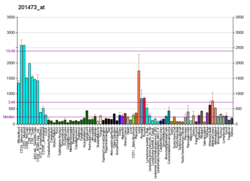Transcription factor jun-B is a protein that, in humans, is encoded by the JUNB gene. [5] [6] Transcription factor jun-B is a transcription factor involved in regulating gene activity following the primary growth factor response. It binds to the DNA sequence 5'-TGA[CG]TCA-3'.




